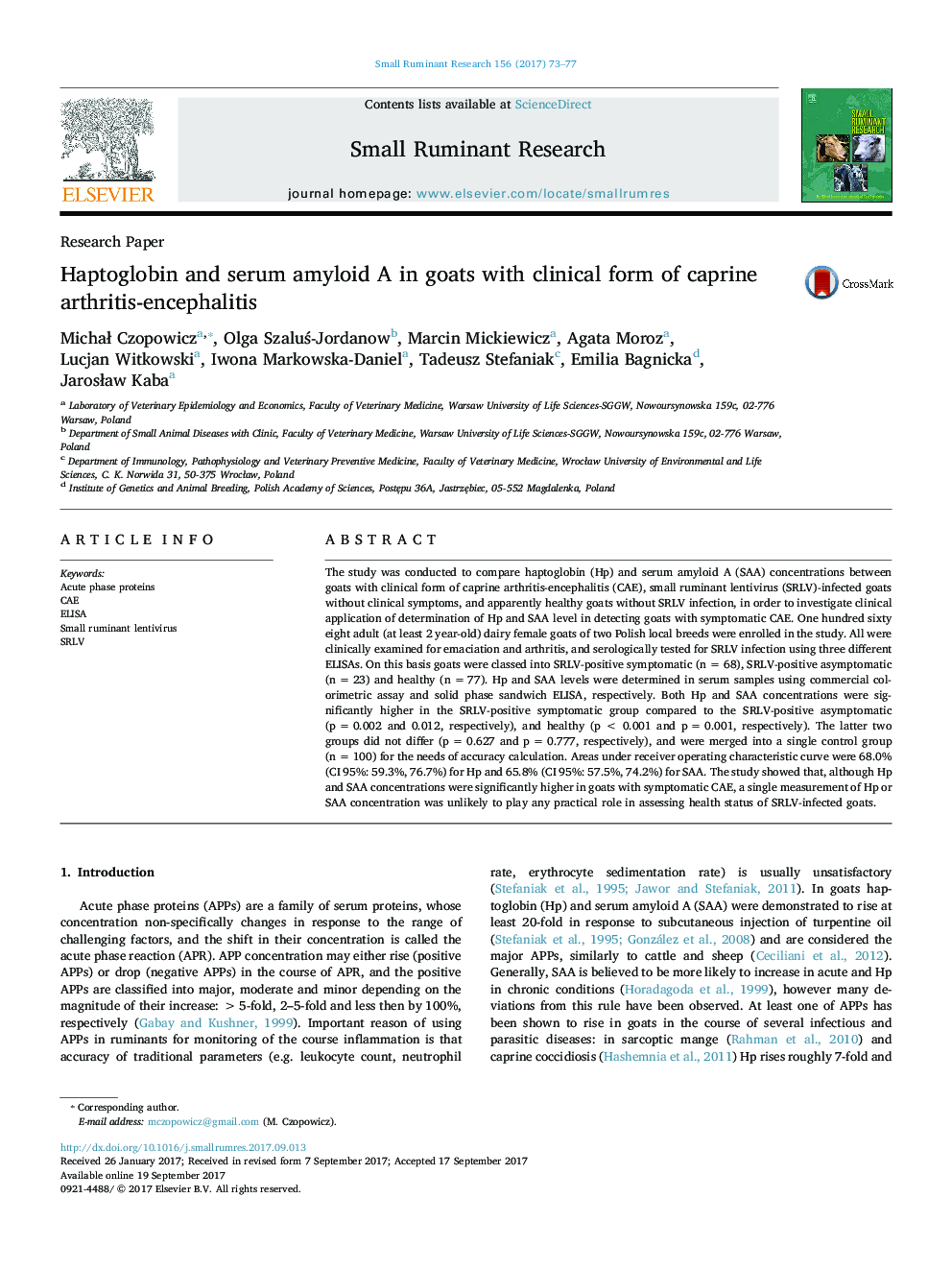| Article ID | Journal | Published Year | Pages | File Type |
|---|---|---|---|---|
| 8504409 | Small Ruminant Research | 2017 | 5 Pages |
Abstract
The study was conducted to compare haptoglobin (Hp) and serum amyloid A (SAA) concentrations between goats with clinical form of caprine arthritis-encephalitis (CAE), small ruminant lentivirus (SRLV)-infected goats without clinical symptoms, and apparently healthy goats without SRLV infection, in order to investigate clinical application of determination of Hp and SAA level in detecting goats with symptomatic CAE. One hundred sixty eight adult (at least 2 year-old) dairy female goats of two Polish local breeds were enrolled in the study. All were clinically examined for emaciation and arthritis, and serologically tested for SRLV infection using three different ELISAs. On this basis goats were classed into SRLV-positive symptomatic (n = 68), SRLV-positive asymptomatic (n = 23) and healthy (n = 77). Hp and SAA levels were determined in serum samples using commercial colorimetric assay and solid phase sandwich ELISA, respectively. Both Hp and SAA concentrations were significantly higher in the SRLV-positive symptomatic group compared to the SRLV-positive asymptomatic (p = 0.002 and 0.012, respectively), and healthy (p < 0.001 and p = 0.001, respectively). The latter two groups did not differ (p = 0.627 and p = 0.777, respectively), and were merged into a single control group (n = 100) for the needs of accuracy calculation. Areas under receiver operating characteristic curve were 68.0% (CI 95%: 59.3%, 76.7%) for Hp and 65.8% (CI 95%: 57.5%, 74.2%) for SAA. The study showed that, although Hp and SAA concentrations were significantly higher in goats with symptomatic CAE, a single measurement of Hp or SAA concentration was unlikely to play any practical role in assessing health status of SRLV-infected goats.
Related Topics
Life Sciences
Agricultural and Biological Sciences
Animal Science and Zoology
Authors
MichaÅ Czopowicz, Olga SzaluÅ-Jordanow, Marcin Mickiewicz, Agata Moroz, Lucjan Witkowski, Iwona Markowska-Daniel, Tadeusz Stefaniak, Emilia Bagnicka, JarosÅaw Kaba,
